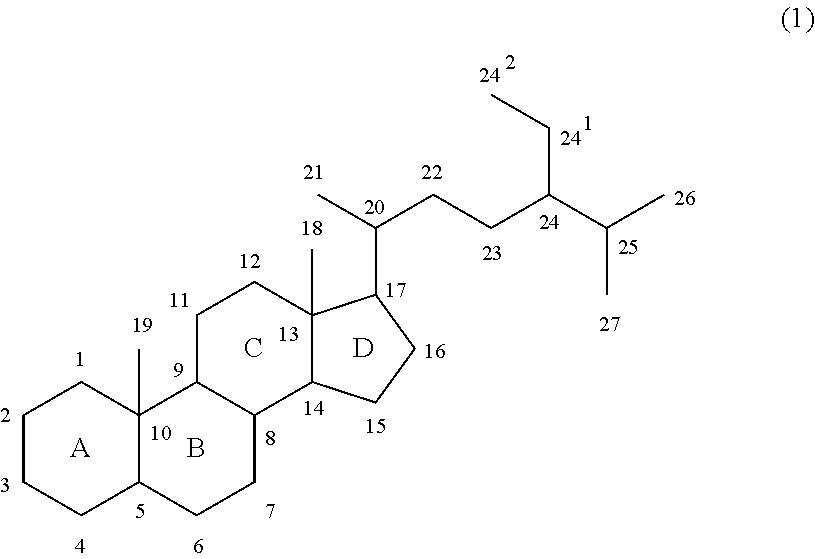Water-in-oil emulsion comprising omega-3 fatty acids and process for the manufacture of same
a technology of emulsion and water in oil, which is applied in the field of waterinoil emulsion comprising 3 fatty acids, can solve the problems of limiting the human body's capacity for metabolizing epa, reducing the rate of epa and dha oxidation, and ensuring a sufficient level of epa in a diet containing neither epa nor dha is difficult, so as to achieve the effect of reducing
- Summary
- Abstract
- Description
- Claims
- Application Information
AI Technical Summary
Benefits of technology
Problems solved by technology
Method used
Image
Examples
example 1
[0062]Fat-continuous spreads (spread 1 and spread A) were produced by separately preparing a fat phase and an aqueous phase in accordance with the following recipes (in % by weight of final product—excluding citric acid).
[0063]
Fat phase1AFish oil containing 30% EPA + DHA22.0022.00Sunflower oil2.317.31Interesterified mixture of 65% palm oil5.265.26stearin (IV = 14) and 35% palm kernel oil #Sterol esters (Generol ® NG Deso, Cognis)12.50Saturated monoglycerides (Dimodan ® HP)0.150.15Unsaturated monoglycerides. (Dimodan ®0.150.15RTB)β-carotene0.060.06Tocopherol mixture0.070.07Flavouring0.010.01# Microporous fat powder produced by supercritical melt micronisation process as described in e.g. WO 2010 / 069746)
[0064]
Aqueous phaseDemineralised water56.2463.74EDTA0.010.01Potassium sorbate0.10.1Buttermilk powder (sweet)0.150.15Sodium chloride1.001.00Citric acid (20%) to adjust pH to 4.7
[0065]Spread A differs from spread 1 in that sterol esters were replaced by sunflower oil and water. The amoun...
example 2
[0067]The spreads described in Example 1 were stored at 5° C. for up to 14 weeks. In case of the spread A, i.e. the spread containing no added sterol esters, off-flavour notes became noticeable after 5 weeks and after 9 weeks the product had developed a clearly perceptible fishy off-flavour. In spread 1 off-flavour notes were first detected after 9 weeks storage and fishy off-notes were detected for the first time after 12 weeks.
PUM
 Login to View More
Login to View More Abstract
Description
Claims
Application Information
 Login to View More
Login to View More - R&D
- Intellectual Property
- Life Sciences
- Materials
- Tech Scout
- Unparalleled Data Quality
- Higher Quality Content
- 60% Fewer Hallucinations
Browse by: Latest US Patents, China's latest patents, Technical Efficacy Thesaurus, Application Domain, Technology Topic, Popular Technical Reports.
© 2025 PatSnap. All rights reserved.Legal|Privacy policy|Modern Slavery Act Transparency Statement|Sitemap|About US| Contact US: help@patsnap.com

